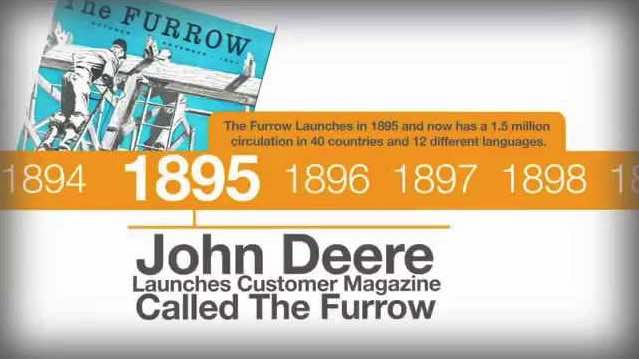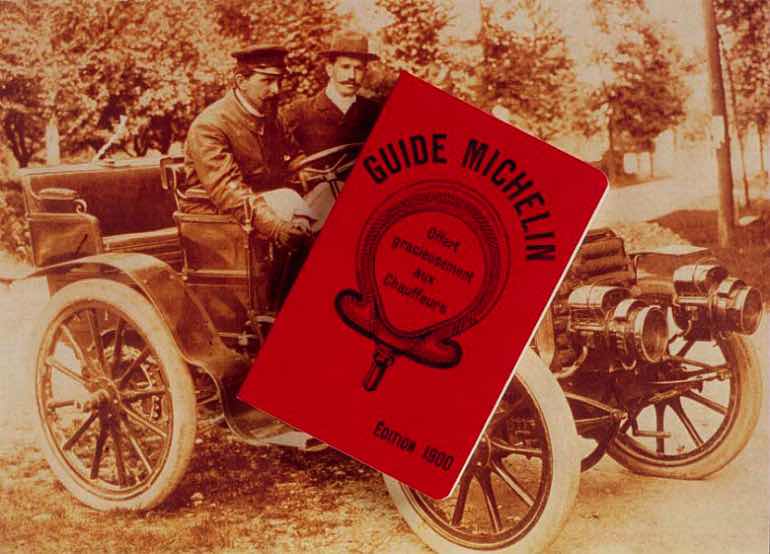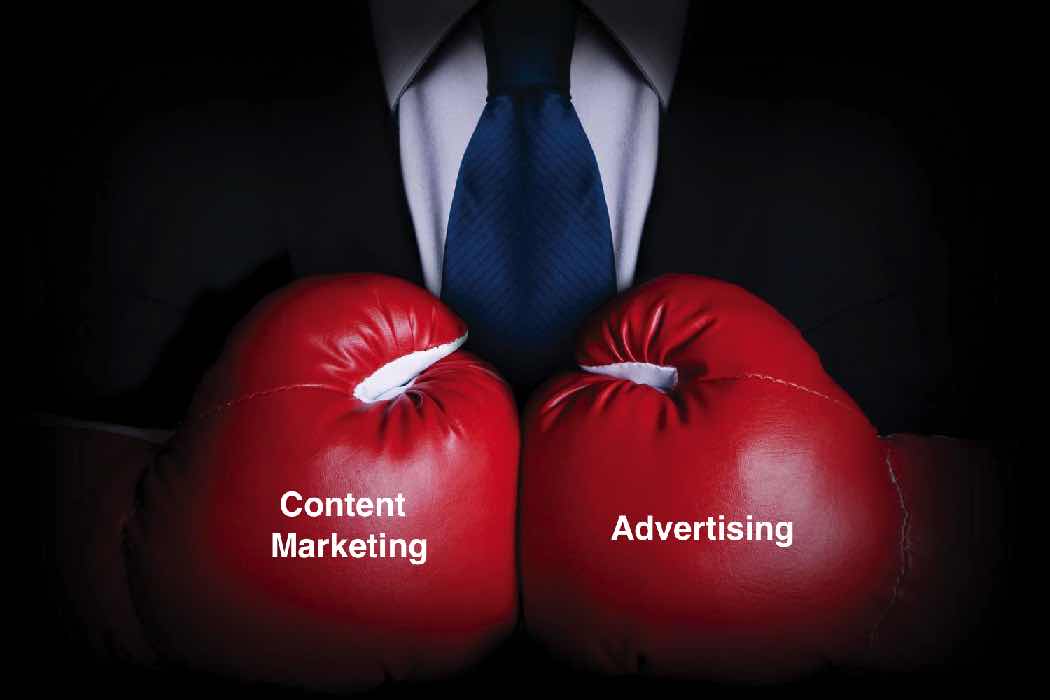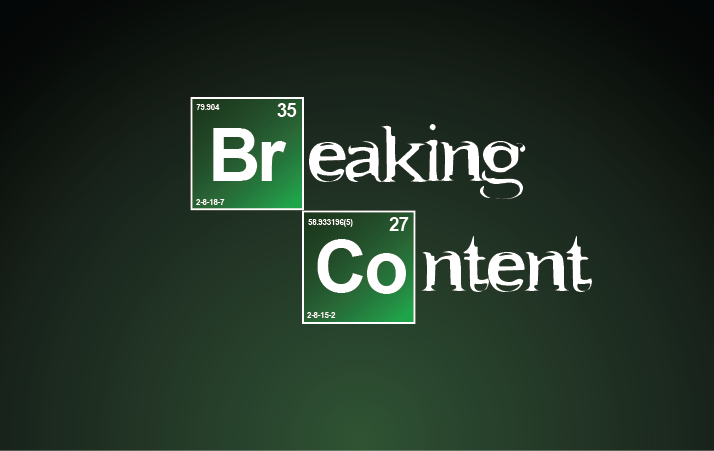Have you ever wondered where, when, how and who started content marketing?
For the longest time, you have heard of content marketing and its power in changing your online business and taking it to the next level. However, just like anything else in this world, content marketing is not something that just sprouted out of nowhere. It is something that was created, developed and further improved through the years.
Many people cite the launch of The Furrow by John Deere back in 1895 as the first ever example of content marketing, which means that this strategy is already around 122 years old. Let's be clear, this is a short story I am going to tell. Some people say that content marketing is more than 3,000 years old. But, with this 'short' 120-years story, you will already see the evolution of content marketing through the ages.
If this origin story is accurate, you will think that all marketers will have a better understanding of how to handle content marketing. But in reality, even after more than 100 years passed, they are still trying to figure things out.
Even up to this day and age, there are still plenty of brands out there which create high sales-driven content disguised as a way to help out consumers.
There are companies that automatically generate extremely terrible content based on keywords alone. And there are agencies which come up with barely legible writing and call it content marketing.
It is clear that the 120-year journey to an excellent content marketing is not over just yet.
Many people cite the launch of The Furrow by John Deere back in 1895 as the first ever example of content marketing, which means that this strategy is already around 122 years old. Let's be clear, this is a short story I am going to tell. Some people say that content marketing is more than 3,000 years old. But, with this 'short' 120-years story, you will already see the evolution of content marketing through the ages.
If this origin story is accurate, you will think that all marketers will have a better understanding of how to handle content marketing. But in reality, even after more than 100 years passed, they are still trying to figure things out.
Even up to this day and age, there are still plenty of brands out there which create high sales-driven content disguised as a way to help out consumers.
There are companies that automatically generate extremely terrible content based on keywords alone. And there are agencies which come up with barely legible writing and call it content marketing.
It is clear that the 120-year journey to an excellent content marketing is not over just yet.

Content Marketing Defined
Before we take a trip down memory lane and the evolution of content marketing, it is important to ensure that we are on the same page here. I am sure you know how content marketing can help you grow your business but are you sure you know what content marketing really is? It is a must to know the real definition of content marketing.
By far, content marketing is composed of creation and distribution of high value and non-branded content with the purpose of driving a long-term customer engagement.
Content marketing is considered a crucial aspect of B2B marketing strategy, with marketing organizations now embracing brand new ways to engage their audiences beyond the usual digital channels with information that offers them with real value.
What used to be a trendy new strategy has now transformed for the past 10 years into a proven marketing tactic in which a lot of organizations build their bigger overall efforts around.
Originally, content marketing was a mere buzzword and numerous brands decided to jump on board as it was a cool new thing to try. After a few years, it is proven how effective this can be. Testing has found out what works is what does not. Those who use it can measure, track and prove its success. This remarkable change has paved the way on how marketers understand all the benefits of content and how this can be used for maximizing return on investment for the company in various departments.
Through content marketing, brands are given the chance to communicate with prospects and customers using their own voice and establish themselves as reliable thought leaders in the industries they belong to, but only if the content gives readers with valuable takeaways.
Thanks to the development of account based marketing strategies in the B2B realm, content that is more focused is proven to be more valuable than ever for addressing specific interests as well as pain points of the targeted buyers.
Experts claim that content marketing is taking a narrower approach. With more and more B2B brands leaning to account based marketing, there is a justifiable demand to offer a more tailored and targeted content to suit the needs of target accounts.
So long as the focus of content marketers is to provide content which concentrates on particular needs of audiences, the effectiveness wave must continue.
By far, content marketing is composed of creation and distribution of high value and non-branded content with the purpose of driving a long-term customer engagement.
Content marketing is considered a crucial aspect of B2B marketing strategy, with marketing organizations now embracing brand new ways to engage their audiences beyond the usual digital channels with information that offers them with real value.
What used to be a trendy new strategy has now transformed for the past 10 years into a proven marketing tactic in which a lot of organizations build their bigger overall efforts around.
Originally, content marketing was a mere buzzword and numerous brands decided to jump on board as it was a cool new thing to try. After a few years, it is proven how effective this can be. Testing has found out what works is what does not. Those who use it can measure, track and prove its success. This remarkable change has paved the way on how marketers understand all the benefits of content and how this can be used for maximizing return on investment for the company in various departments.
Through content marketing, brands are given the chance to communicate with prospects and customers using their own voice and establish themselves as reliable thought leaders in the industries they belong to, but only if the content gives readers with valuable takeaways.
Thanks to the development of account based marketing strategies in the B2B realm, content that is more focused is proven to be more valuable than ever for addressing specific interests as well as pain points of the targeted buyers.
Experts claim that content marketing is taking a narrower approach. With more and more B2B brands leaning to account based marketing, there is a justifiable demand to offer a more tailored and targeted content to suit the needs of target accounts.
So long as the focus of content marketers is to provide content which concentrates on particular needs of audiences, the effectiveness wave must continue.
Old School Content Marketing and Its Humble Beginnings
A lot of startups, businesses, entrepreneurs and marketers believe content marketing is the new hype but in fact this is one of those old-school marketing tactics that give results. In order to really observe the evolution of content marketing, it's important to have a look at its premises. Prior to it becoming a household name, content marketing was already making a big difference in the marketing efforts of several popular brands.
• There used to be an extremely low overall rate of adoption due to the fairly high entry barriers.
• Several standout brands wanted to reach out to customers outside the conventional sales process. Most of them rode the early connections for years, forming new ties to successive generations of customers.
• Technological innovations made it a bit easier to connect with large audiences although the early technology adoption stayed expensive and real innovators were confined to the large brands with large budgets.
• It was time-consuming and expensive to bring together writers, publishers, distributors and artists to connect with people at all kinds of scale.
• Brands that took the earliest hit on cost have reaped the rewards for one century or more.
• There used to be an extremely low overall rate of adoption due to the fairly high entry barriers.
• Several standout brands wanted to reach out to customers outside the conventional sales process. Most of them rode the early connections for years, forming new ties to successive generations of customers.
• Technological innovations made it a bit easier to connect with large audiences although the early technology adoption stayed expensive and real innovators were confined to the large brands with large budgets.
• It was time-consuming and expensive to bring together writers, publishers, distributors and artists to connect with people at all kinds of scale.
• Brands that took the earliest hit on cost have reaped the rewards for one century or more.
The Emergence of Content Marketing
As mentioned earlier, The Furrow by John Deere was not created to make instant sales. The goals were pretty straightforward which was to help farmers to become more prosperous for them to have additional income for reinvesting in their farms which will hopefully include John Deere equipment.
Joe Pulizzi’s book entitled Epic Content Marketing characterizes the first ever content marketing strategy wherein The Furrow was leveraged not for directly selling John Deere equipment but to give education to farmers on the latest technology and how they will be able to become more successful farmers and business owners. This book really made an important change: this was a switch in the history of the evolution of content marketing.
This was created by thoughtful storytellers, journalists and designers and tackled topics cared deeply about by farmers. The content’s goal was to assist farmers to become more prosperous and profitable.
After more than one hundred years, The Furrow remains to be in production, with John Deere still an extremely successful brand. If you are looking for a good example of long term marketing strategies that truly work, there is no need to look any further.
During those early days of marketing in which brands were trying to figure out how to reach out to customers, other companies started to simply talk to them and not sell to them.
Most of the early initiatives continued to live on, which include the following:
• The Michelin Guide (1900) – This massive guide assisted drivers on how to maintain their vehicles and look for places to eat and stay during their travels. It became very successful that restaurants all over the world still vie to get Michelin stars.
• Jell-O Recipe Collections (1904) – Kraft, the parent company, still offers the free recipe collections which feature its products although they have gone mainly digital. The first one amassed more than $1 million in sales in just two years.
• Burns and McDonnell Engineering’s Benchmark (1913) – This is an award-winning magazine still produced by the consulting and engineering firm.
Even though there were undoubtedly internal conversations regarding sales and more goals focused on business, the one thing everyone can remember about the early content creations is how helpful they were. These high-quality publications were nicely designed filled with information found useful by readers.
Therefore, even if the use of content marketing has evolved, the objective stays the same: being helpful to the audience. It does not matter if you were writing guides or creating infographics and not producing magazines. Contemporary content marketers can take out a page of the old playbooks and remember to be helpful and useful before anything else.
Joe Pulizzi’s book entitled Epic Content Marketing characterizes the first ever content marketing strategy wherein The Furrow was leveraged not for directly selling John Deere equipment but to give education to farmers on the latest technology and how they will be able to become more successful farmers and business owners. This book really made an important change: this was a switch in the history of the evolution of content marketing.
This was created by thoughtful storytellers, journalists and designers and tackled topics cared deeply about by farmers. The content’s goal was to assist farmers to become more prosperous and profitable.
After more than one hundred years, The Furrow remains to be in production, with John Deere still an extremely successful brand. If you are looking for a good example of long term marketing strategies that truly work, there is no need to look any further.
During those early days of marketing in which brands were trying to figure out how to reach out to customers, other companies started to simply talk to them and not sell to them.
Most of the early initiatives continued to live on, which include the following:
• The Michelin Guide (1900) – This massive guide assisted drivers on how to maintain their vehicles and look for places to eat and stay during their travels. It became very successful that restaurants all over the world still vie to get Michelin stars.
• Jell-O Recipe Collections (1904) – Kraft, the parent company, still offers the free recipe collections which feature its products although they have gone mainly digital. The first one amassed more than $1 million in sales in just two years.
• Burns and McDonnell Engineering’s Benchmark (1913) – This is an award-winning magazine still produced by the consulting and engineering firm.
Even though there were undoubtedly internal conversations regarding sales and more goals focused on business, the one thing everyone can remember about the early content creations is how helpful they were. These high-quality publications were nicely designed filled with information found useful by readers.
Therefore, even if the use of content marketing has evolved, the objective stays the same: being helpful to the audience. It does not matter if you were writing guides or creating infographics and not producing magazines. Contemporary content marketers can take out a page of the old playbooks and remember to be helpful and useful before anything else.

Content Pushed to the Side with the Rise of Advertising
When advertising started to emerge as a form of driving force which affected the behavior of consumers, high profile examples of the historical content marketing were pushed to the side.
During the 1930s, Procter & Gamble started to create serial dramas on the radio which featured their detergents, thus the term soap operas. However, these examples of brand-driven content served more like heralds of the rising advertising era.
When the 60s and 70s came and the executives of Madison Avenue became experts in the manipulation of ad responses, content marketing’s high profile examples disappeared.
However, by the beginning of 1980s, content started to come back around.
In the year 1982, Hasbro and Marvel comics partnered up to come up with the G.I Joe comic book, a simple joint venture which forever changed how toys were marketed.
It was in 1997 when Lego launched the Brick Kicks magazine which is still produced up to this day under the name LEGO Club Magazine.
Soon after, the 90s came which brought them the internet and software and it was then when content marketing really evolved in what we know now: the content marketing’s modern era has shifted to full gear.
Microsoft launched its first major corporate blog during 1998 and just three years after, the overall spend on content reached $20 billion. On that same year, the term content marketing was used in Cleveland, Ohio and there was an earnest start of the process of codifying and systematizing this marketing approach.
Several of the remarkable early adopters to this new or old method of content marketing include the following:
• By 2006, Sherwin Williams launched the STIR magazine which offers advice to commercial architects and interior designers.
• LiveVault, in 2005, created a video that featured John Cleese and targeted IT managers. In a world where YouTube doesn’t exist yet, this got more than 250,000 downloads.
• Apple and Nike joined together in 2006 to launch Nike+, a product with the ability to record progress and track the runs of the user over time.
• Procter & Gamble, soap opera’s originators, came up with a content website for teenage girls in 2008 known as BeingGirl.com. A certain study confirmed that this is four times more effective compared to traditional marketing.
As you can see in this evolution of content marketing and advertising don’t really go nicely together contrary to popular belief. The years when advertising was considered as the primary method to communicate with consumers proved to be a difficult era for content marketing.
It seems that modern audiences are more responsive to soft sell content compared to in your face advertising, thus the need to be careful in choosing your channels.
During the 1930s, Procter & Gamble started to create serial dramas on the radio which featured their detergents, thus the term soap operas. However, these examples of brand-driven content served more like heralds of the rising advertising era.
When the 60s and 70s came and the executives of Madison Avenue became experts in the manipulation of ad responses, content marketing’s high profile examples disappeared.
However, by the beginning of 1980s, content started to come back around.
In the year 1982, Hasbro and Marvel comics partnered up to come up with the G.I Joe comic book, a simple joint venture which forever changed how toys were marketed.
It was in 1997 when Lego launched the Brick Kicks magazine which is still produced up to this day under the name LEGO Club Magazine.
Soon after, the 90s came which brought them the internet and software and it was then when content marketing really evolved in what we know now: the content marketing’s modern era has shifted to full gear.
Microsoft launched its first major corporate blog during 1998 and just three years after, the overall spend on content reached $20 billion. On that same year, the term content marketing was used in Cleveland, Ohio and there was an earnest start of the process of codifying and systematizing this marketing approach.
Several of the remarkable early adopters to this new or old method of content marketing include the following:
• By 2006, Sherwin Williams launched the STIR magazine which offers advice to commercial architects and interior designers.
• LiveVault, in 2005, created a video that featured John Cleese and targeted IT managers. In a world where YouTube doesn’t exist yet, this got more than 250,000 downloads.
• Apple and Nike joined together in 2006 to launch Nike+, a product with the ability to record progress and track the runs of the user over time.
• Procter & Gamble, soap opera’s originators, came up with a content website for teenage girls in 2008 known as BeingGirl.com. A certain study confirmed that this is four times more effective compared to traditional marketing.
As you can see in this evolution of content marketing and advertising don’t really go nicely together contrary to popular belief. The years when advertising was considered as the primary method to communicate with consumers proved to be a difficult era for content marketing.
It seems that modern audiences are more responsive to soft sell content compared to in your face advertising, thus the need to be careful in choosing your channels.

The Comeback of Content Marketing
When 2015 came, everyone found themselves amidst the growing pains of content marketing. Content marketers are now everyone, more content is in production and there are more discerning consumers that should be reached out to.
In this second glorious era of content marketing, the following characteristics were evident:
• Content is mainly written in the form of articles, blogs, eBooks and white papers. There is a lag in the adoption of the visually driven content.
• There is a staggeringly all time high rate of adoption which will continue to increase with the improvement of software and reduced price.
• There are also lower entry barriers with most journalists shifting away from the traditional media outlets, more design tools have become available and there is a widespread digital publishing.
• Writers are starting to learn the real meaning of being content marketers but it is difficult to just talk about the needs of the audience.
• There is a dramatic swing of quality scale from outstanding to completely awful.
• There is a business in buy in, especially in the B2B sector. A common problem is the concerns about the documentable ROI.
In this second glorious era of content marketing, the following characteristics were evident:
• Content is mainly written in the form of articles, blogs, eBooks and white papers. There is a lag in the adoption of the visually driven content.
• There is a staggeringly all time high rate of adoption which will continue to increase with the improvement of software and reduced price.
• There are also lower entry barriers with most journalists shifting away from the traditional media outlets, more design tools have become available and there is a widespread digital publishing.
• Writers are starting to learn the real meaning of being content marketers but it is difficult to just talk about the needs of the audience.
• There is a dramatic swing of quality scale from outstanding to completely awful.
• There is a business in buy in, especially in the B2B sector. A common problem is the concerns about the documentable ROI.
Modern Content Marketing and the Challenges It Faces
The 21st-century content marketers are faced with a dizzying amount of digital tools available at their disposal to come up with content at an extraordinary scale. However, there are two primary challenges involved here:
• A massive content influx from companies, brands, and individuals in almost all niches.
• Being forced to be able to cut through the noise made by the new adopters, a majority of which has low quality but remains to be extremely noisy.
If you don't have a content marketing strategy in place yet, I strongly recommend you to think about one and create one. Content marketing can even be used as growth hacking. Indeed, there are many examples of companies, which met exponential growth through content marketing growth hacking.
• A massive content influx from companies, brands, and individuals in almost all niches.
• Being forced to be able to cut through the noise made by the new adopters, a majority of which has low quality but remains to be extremely noisy.
If you don't have a content marketing strategy in place yet, I strongly recommend you to think about one and create one. Content marketing can even be used as growth hacking. Indeed, there are many examples of companies, which met exponential growth through content marketing growth hacking.

Crowded Field of Content
More than anything else, the field has become more crowded like you have never seen it before. The good old names of John Deere in 1895 and Michelin in 1900 had the benefit of being able to try something new. They were able to disrupt how consumers perceive brands and products.
No company than ever produced content only to help people with the hopes that these people will buy something one day.
However, pretty much everyone has joined the content bandwagon. In 2010, the year when Content Marketing Institute was established, 88 percent of all brands was already harnessing the power of content marketing: this is how much content marketing has evolved!
A research study indicates that there is now a stronger competition in the field of content marketing:
• 9 of 10 organizations are now marketing with content.
• 79 percent of marketers have reported that their organizations shifted to brand content.
• Content marketing is used by 91 percent of B2B marketers.
• Companies with 10,000 or more employees are using 18 different tactics for content marketing.
It is clear that people learned from efforts of the content creators of the past at least to the point of trying to mimic their successes. However, the problem comes from the second distinguishing feature of the new content marketing era, which is none other than scalability.
Also, with the rise of social media, the growth of content creation and spread is exponential.
No company than ever produced content only to help people with the hopes that these people will buy something one day.
However, pretty much everyone has joined the content bandwagon. In 2010, the year when Content Marketing Institute was established, 88 percent of all brands was already harnessing the power of content marketing: this is how much content marketing has evolved!
A research study indicates that there is now a stronger competition in the field of content marketing:
• 9 of 10 organizations are now marketing with content.
• 79 percent of marketers have reported that their organizations shifted to brand content.
• Content marketing is used by 91 percent of B2B marketers.
• Companies with 10,000 or more employees are using 18 different tactics for content marketing.
It is clear that people learned from efforts of the content creators of the past at least to the point of trying to mimic their successes. However, the problem comes from the second distinguishing feature of the new content marketing era, which is none other than scalability.
Also, with the rise of social media, the growth of content creation and spread is exponential.
Content: The Good, the Bad and The Ugly
To avoid the Bad and the Ugly and only produce Good content, it's essential to begin with a content marketing campaign plan. The latest developments such as instant blogs and the universal social media adoption have made it possible for a lot of brands and individuals to come up with content marketing materials which can meet business goals.
Marketing automation software and email marketing software, combined with tools for social scheduling, have made it more than possible for all people to share content at all times.
The combination of two technological advancement channels, which are both going forward at a steadier pace, has formed a hurricane of content which swirls all around the target audience. The technology is definitely boosting content creation and content sharing. Moreover, tech will continue to improve at an incredible pace and content marketing will evolve with it.
Some of this swirling content is great but most are not. But, you need to compete with all of these at all times.
Marketing automation software and email marketing software, combined with tools for social scheduling, have made it more than possible for all people to share content at all times.
The combination of two technological advancement channels, which are both going forward at a steadier pace, has formed a hurricane of content which swirls all around the target audience. The technology is definitely boosting content creation and content sharing. Moreover, tech will continue to improve at an incredible pace and content marketing will evolve with it.
Some of this swirling content is great but most are not. But, you need to compete with all of these at all times.

Widening Gaps in the Future of Content Marketing
With the continuous maturation process of content marketing, there is a constant speculation as to where the approach is and should be going.
Most now require brands to be publishers, own their production of content and distribution channels and jump into the deeper end of content with both feet.
Some are seeing the decline of content marketing as its limitations are now more apparent and it is revealed that it is no longer the magic bullet as it used to be in the past.
Below are some of the predictions of how content marketing will unfold in the near and distant future:
• Content’s definition is going to continue to grow and expand, with live streams, webinars, podcasts, Slideshare, video and who knows what else will join the ranks of written content. Content tends to go more and more about brand storytelling, so start teling your story!
• The expectations coming from consumers will drive the overall quality of content higher than before. Poor content is going to suffer in terms of search rankings and the brands which produce it will also suffer in their respective industries.
• Content is going to expand from marketing departments into all aspects of businesses as it becomes easier than ever to tie this with the goals of the business as well as ROI. No matter your business, having a content marketing strategy should be part of your overall marketing plan.
• There will be a continuously widening gap between terrible examples of content marketing and the excellent ones as companies that invested earlier will get better and better in the use of the strategy while the late adopters are struggling to keep up with the pace.
• Formal training for the content marketers is going to expand which will further legitimize the approach and enhance the professional profile of people who create content as a way of living.
• Personalization and interactivity will become more expected and automated. Irrelevant content or advertising will become the ultimate faux pas in marketing.
• As mentioned above, technology and software will bring content marketing to new heights and undefined destinations with videos probably being the future of content marketing. For example, technologies like VR (Virtual Reality) or AR (Augmented Reality) will redefine content and will probably be part of the next evolution of content marketing. Content marketing is the future of your brand!
Most now require brands to be publishers, own their production of content and distribution channels and jump into the deeper end of content with both feet.
Some are seeing the decline of content marketing as its limitations are now more apparent and it is revealed that it is no longer the magic bullet as it used to be in the past.
Below are some of the predictions of how content marketing will unfold in the near and distant future:
• Content’s definition is going to continue to grow and expand, with live streams, webinars, podcasts, Slideshare, video and who knows what else will join the ranks of written content. Content tends to go more and more about brand storytelling, so start teling your story!
• The expectations coming from consumers will drive the overall quality of content higher than before. Poor content is going to suffer in terms of search rankings and the brands which produce it will also suffer in their respective industries.
• Content is going to expand from marketing departments into all aspects of businesses as it becomes easier than ever to tie this with the goals of the business as well as ROI. No matter your business, having a content marketing strategy should be part of your overall marketing plan.
• There will be a continuously widening gap between terrible examples of content marketing and the excellent ones as companies that invested earlier will get better and better in the use of the strategy while the late adopters are struggling to keep up with the pace.
• Formal training for the content marketers is going to expand which will further legitimize the approach and enhance the professional profile of people who create content as a way of living.
• Personalization and interactivity will become more expected and automated. Irrelevant content or advertising will become the ultimate faux pas in marketing.
• As mentioned above, technology and software will bring content marketing to new heights and undefined destinations with videos probably being the future of content marketing. For example, technologies like VR (Virtual Reality) or AR (Augmented Reality) will redefine content and will probably be part of the next evolution of content marketing. Content marketing is the future of your brand!
Don’t Try Content Marketing, Do It!
In this modern era of content marketing, trying to market your product or service will simply not work. What you should do instead is to deliver the exact message you want to convey to your consumers in a genuine and honest way. There are many content marketing tactics that you should follow in order to succeed.
It doesn’t matter who your target audience is because it is a safe bet that they created and outer layer as their protection from the fusillade of messages they deal with every single day. Putting your faith in your customers will make them respond in kind. Below are the three simple rules you have to remember for an effective and efficient content marketing:
But, just like in conventional evolution, again, this will take time. This is all that you’ve got to your own advantage. So, make sure that you use it and use it to the best you can.
Content can be created, curated and shared in many places: social media, email marketing, offline events...
It doesn’t matter who your target audience is because it is a safe bet that they created and outer layer as their protection from the fusillade of messages they deal with every single day. Putting your faith in your customers will make them respond in kind. Below are the three simple rules you have to remember for an effective and efficient content marketing:
• Know your place
Never waltz into a party as if you are someone extra special. Remember that no one will care about you until they really get to know who you are and what you can offer. Also, no one would like to listen to someone who only talks about themselves and themselves alone. You have to make your content, not about your service or product but more about your audience.• Exert effort and time.
After you had your first conversation with your audience, don’t just hand your business card over and move on to the next prospect. All relationships require time to develop and the kind of relationship you want to form with your audience is not an exemption. So, don’t think twice about spending some effort and time in getting to know your audience in the best way you can.• Be sincere.
This is pretty much self-explanatory and is actually very important as far as content marketing is concerned. You would never want your audience to feel as if you are not in any way willing to establish a relationship with them. Instead of pushing each other away, you as well as your audience can form and nurture a solid and strong relationship. Find that connectivity and offer your audience with the chance to give a positive response to your message.But, just like in conventional evolution, again, this will take time. This is all that you’ve got to your own advantage. So, make sure that you use it and use it to the best you can.
Content can be created, curated and shared in many places: social media, email marketing, offline events...
The Evolution of Content Marketing: Where Will Your Content Marketing Journey Go?
Do you pull ahead of your competitors through creating excellent content that your customers are going to enjoy consuming? Or are you just letting the content caravan to pass you by? Instead of plunging deep into the field of content marketing head on and clueless, try to learn from the history books you can find.Come up with a rich culture of content and before you know it, your brand will soon be reaping the amazing rewards for the many years to come to benefit you and your business in general. Don't forget that content marketing (And most marketing strategies) is constantly evolving. Stay up-to-date, try new things, check what others do and start taking action!
Growth Hackers is one of the top inbound marketing agencies, we produce our own content but we also help startups, small businesses and entrepreneurs with their content strategy, curation and creation. Do you need content for your inbound marketing strategy? Do you need guidance or execution? Contact Growth Hackers now if you'd like to start a content marketing strategy or improve your current one.





9 Comments
So neat to see this content marketing journey, Jonathan. Come a long way over the years.
Thanks Ryan.
Indeed, content has evolved a lot and will evolve much more with new technologies like AR, VR, etc…
Thanks for the great info! I had no idea content marketing was so old, but I guess it makes sense. As always, I’m excited to see where it goes from here.
Thanks for sharing this with us, it is a really helpful and interesting article! Love to see the evolution of content through time. So awesome!
Thanks for sharing the significant information. It helped me and will help others a lot. Nice.. …
A very interesting and informative piece Jonathan. I had no idea about the origin of the term soap opera and I’m surprised it came from early content marketing!
It’s almost overwhelming the extent to which content marketing is used today and it can feel like a barrier to entry in any market. However the takeaway for me is the crux of your article in my view: evolution.
In order to succeed I guess we all have to evolve in terms of our approach and execution in order to stand out from the crowds in every single niche.
This was extremely helpful!!! thoroughly enjoyed reading the blog! thank you for the information
Thanks in favor of sharing such a fastidious idea, piece of writing is nice, that’s why I have read it completely
Thanks! I look forward to reading your future articles!